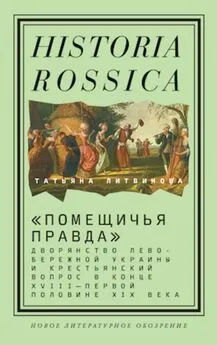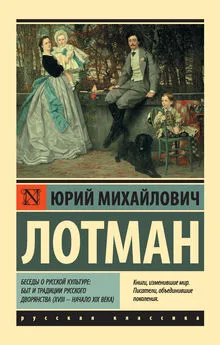Татьяна Гусарова - Европейское дворянство XVI–XVII вв.: границы сословия
- Название:Европейское дворянство XVI–XVII вв.: границы сословия
- Автор:
- Жанр:
- Издательство:Археографический центр
- Год:1997
- Город:Москва
- ISBN:5-057-86169-
- Рейтинг:
- Избранное:Добавить в избранное
-
Отзывы:
-
Ваша оценка:
Татьяна Гусарова - Европейское дворянство XVI–XVII вв.: границы сословия краткое содержание
Европейское дворянство XVI–XVII вв.: границы сословия - читать онлайн бесплатно полную версию (весь текст целиком)
Интервал:
Закладка:
Numerous and important privileges firmly distinguished a noble from a commoner. But it is not easy to determine nobility by its privileges: some of them were not common for all nobles, the others were shared by many commoners. Privileges were easily usurped and often broken by the crown.
Privileges consolidated all social groups of nobility, but in other respects nobility was extremely heterogeneous, uniting many various social groups. Inside nobility various hierarchical connections existed. Wealth, birth, office, position in clienteles and some other factors could mark out a nobleman from the great mass of nobility. «Vertical» and «horizontal» differences coexisted and influenced each other.
Lesser nobility was also very heterogeneous. The difference between noble of blood and newly ennobled was always notable and the integration was usually quite slow.
All social groups of lesser nobility were united by their relative poverty. Their legal status was unstable and the danger of its loss was very real. Lesser nobility was very close to the boundary between nobility and common estate. This limit was well defined juridically and strengthened by the system of interdictions from both sides. State and both estates guarded this limit. The number and density of nobility and very character of its influence in society depended on the position of this limit.
Ennoblement was a typical phenomenon all over Europe while its forms, scope and results were very different. All variety of its forms may be reduced to three following ones: grant of nobility, purchase of nobility and usurpation of noble status. Among these forms the percentage of grants was cut while the number of purchases increased greatly.
Everywhere the state tried to control the procedure of ennoblement but rich and powerful commoners often managed to usurp noble status in some way or other. Its struggle against illegal ennoblement was not always effective. The state forced nobles to prove their status during prolonged and ruinous lawsuits. In such lawsuits the significance of written evidences grew notably, but common opinion also preserved its importance.
The trend to «closing» of noble estate is evident for many European countries in the seventeenth century (in comparison with the sixteenth century). Proofs of nobility became more complicated. State control over composition of estate and its struggle against usurpation became more systematic and rigid.
Unlike inter-estate boundary, the limits inside nobility were not so well defined juridically but in their social dimension they were quite definite and were realized by contemporaries. This boundary separated real elite of society from the mass of the lesser nobility that served as an intermediate (buffer) social strata. The practice of armorial bearing was a visual sign of this boundary and was often combined with genealogical control.
Rich commoners, being ennobled, were not usually satisfied with the level of lesser nobility. They crossed both boundaries and reinforced the elite of nobility. The ennoblement of commoners and the loss of noble status by poor nobles were two interrelated manifestations of social mobility that allayed disparity between wealth and noble status.
Despite common features that united all strata of nobility in every European country, the notion of unity of noble estate needs important reservations. Wealth, privileges, political influence, occupations and ways of life were very different for aristocracy and for lesser nobility. This difference must be taken into account when ideas of «crisis» and «decline» of nobility in the sixteenth and seventeenth centuries are examined. More close investigations always show the rise and flourishing of many nobles equally with decline of others.
In all European countries noble values continued to prevail in the sixteenth and seventeenth centuries. Owing to ennoblement most rich and powerful commoners were included in the ranks of nobility and strengthened it. Decline and disappearance of ancient families were more than compensated by influx of new men. The ennobled families usually renounced their previous occupations that raised them. The so called «treason of bourgeoisie» was in fact the triumph of nobility that totally preserved its leading position in society.

Примечания
1
История крестьянства в Европе. Эпоха феодализма. Т. 1–3. М., 1985–1986.
2
См., например: Labatut J. P. Les noblesses européennes de la fin du XV еsiècle à la fin da XVIII еsiècle. P., 1978; Meyer J. Noblesses et Pouvoirs dans l'Europe d'Ancien Régime. P., 1974.
3
Gentry and Lesser Nobility in Late Medieval Europe. Glouchester, 1986.
4
О рангах и разрядах людей в Тюдоровской Англии см. подробнее: Wrightson К. English Society, 1580–1680. L., 1982; Idem. Estates, Degrees and Sorts: Changing Perceptions of Society in Tudor and Stuart England // Language, History and Class. Oxford, 1991.
5
Mason J. E. Gentlefolk in the making. Studies in the History of English courtesy Literature: a related topics from 1531 to 1776. Philadelphia, 1935.
6
Smith Th. De Republica Anglorum // Complaint and Reform in England. N. Y., 1976. Ch. 20.
7
Wilson Th. The State of England. A. D. 1600. L., 1936. P. 17.
8
Smith Th. Op. cit. Ch. 17, 18.
9
Wilson Th. Op. cit. P. 22.
10
Smith Th. Op. cit. Ch. 20.
11
Smith Th. Op. cit. Ch. 17.
12
Smith Th. Op. cit. Ch. 17.
13
Stone L. The crisis of the aristocracy. L., 1967. P. 96–97.
14
Stone L. The crisis… P. 97, 756.
15
Naunton R. Fragments Regalia, or observations on the late queen Elisabeth, her times and favourites. L., 1895. P. 37.
16
De Maisse H. A. Journal, 1597. Bloomsbury, 1931. P. 12.
17
The Sayings of Queen Elizabeth. L., 1923. P. 158.
18
Stone L. The crisis…; Stone L. Family and Fortune. Studies in aristocratic finance. Oxf., 1973; Tawney R. The Rise of the Gentry 1558–1640 // English Historical Review. V. XI, 1941; Tawney R The Rise of the Gentry: a postscript // Economic History Review. V. VII, 1954; Mac Caffrey W. T. Place and Patronage in Elizabethan politics // Elizabethan Government and Society. L., 1961.
19
Original Letters illustrative of English History. L., 1846. V. 4. P. 67.
20
Stone L. The crisis… P. 627.
21
Stone L. The crisis… P. 627.
22
Smith Th. Op. cit. Ch. 18.
23
Ibidem.
24
Семенов В. Ф. Описи земель Вильяма Герберта графа Пемброка как источник по истории южно-английского манора второй половины XVI в. // Очерки социально-экономической и политической истории Англии и Франции XIII–XVII вв. М., 1960. С. 17.
25
Stone L. The crisis… P. 71–72.
26
Ibidem.
27
Calendar of the State Papers. Domestic ser., 1598–1601. P. 344.
28
Stone L. Family and Fortune. P. 39.
29
Lives snd Letters of the Devereux, Earls of Essex. L., 1853. V. 2. P. 487.
30
Smith Th. Op. cit. Ch. 18.
31
Wilson Th. Op. cit. P. 23.
32
Osborne P. Historical mémoires of the reigns of queen Elisabeth and king James. Edinbourgh, 1811. P. 56.
33
Smith Th. Op. cit. Ch. 18.
34
Stone L. The crisis… P. 69–70.
35
Tawney R. Op. cit.
36
Wilson Th. Op. cit. P. 18.
37
Ibid. P. 24.
38
Джонсон Б. Драматические произведения. 2 Т. М.; Л., 1931, 1933. Т. II. С. 56.
39
Campbel М. The English yomen under Elizabeth and the early Stuarts. New Haven, 1942.
40
Smith Th. Op. cit. Ch. 20.
41
Smith Th. Op. cit. Ch. 20.
42
Nash Th. The Complete Works. V. I. L. 1883. P. 168–169.
43
Smith Th. Op. cit. Ch. 22.
44
Wilson Th. Op. cit. P. 19.
45
Smith Th. Op. cit. Ch. 20.
46
Stone L. The crisis… P. 66, 67.
47
Wagner A. R. English Genealogy. Oxf., 1960.
48
Smith Th. Op. cit. Ch. 21.
49
Wagner A. R. Op. cit.
50
Stone L. The crisis… P. 68.
51
Mercer E. English Art 1553–1625. Oxf., 1962. P. 219–220.
52
Stone L. The crisis… P. 24.
53
Wagner A. R. Op. cit.; Round Н. Studies in peerage and Family History. L., 1901; Round H. Peerage and Pedigree. L., 1910; Maclagan M. Genealogy and Heraldry in the sixteenth and seventeenth centuries // English Historical scholarship in the sixteenth and seventeenth centuries. L.; N. Y., 1956.
54
Smout Т. С. A History of the Scottish People 1560–1830. London, 1972. P. 36. Ср. Другую французскую поговорку: «Горд, как шотландец» (II est fier comme un Ecossais), приведенную в «Истории» Джона Мэра (1467–1550) — Major J. History of Greater Britain. Scottish History Society edn. 1892. P. 44.
55
Maclean F. A Concise History of Scotland. L., 1983. P. 68.
56
Early Travellers in Scotland. Edin., 1891. P. 43, 48.
57
Wormald J. Court, Kirk and Community: Scotland 1470–1625. L., 1981. P. 170.
58
Sir Thomas Innes of Learney. Scots Heraldry. L.; Edin., 1978. P. 2.
59
Maclean F. Op. cit. P. 68.
60
Так отозвался о себе Патрик Гордон (1635–1699), состоявший на шведской, польской и с 1661 г. русской службе и бывший в чине генерала и контр-адмирала главным военным наставником Петра I.
61
Hartley J. M. Guide to Documents and Manuscripts in the United Kingdom relating to Russia and the Soviet Union. L.; N. Y., 1987. P. 82; Лобанов-Ростовский А. Б., кн. Русская родословная книга. Т. I. СПб., 1895. С. 366.
Читать дальшеИнтервал:
Закладка:










